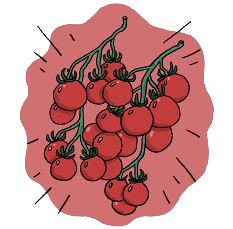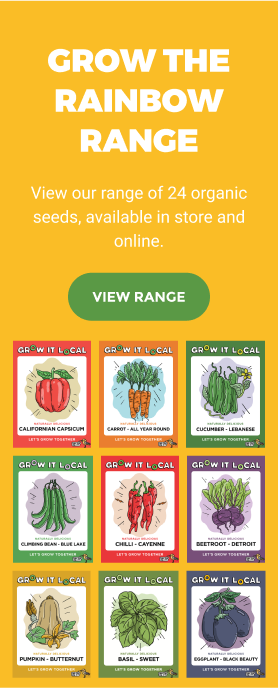Learn to grow microgreens at home, join Grow It Local +
How to grow
Join Our Community
Learn to grow and cook healthy, delicious, organic food at home by joining our seasonal grow-alongs.
Join Our Community
Learn to grow and cook healthy, delicious, organic food at home by joining our seasonal grow-alongs.
Growing Tips and Tricks
Location:
Tomatoes thrive in warm climates with full sun exposure. Choose a location in your garden that receives at least 6-8 hours of direct sunlight daily. The soil should be well-draining, fertile, and rich in organic matter.
Watering:
Roma tomatoes require regular and consistent watering to develop healthy fruit. Keep the soil evenly moist but not waterlogged. In hot weather, you may need to water daily
Problems:
Pests: Watch out for common tomato pests such as aphids, whiteflies, and tomato hornworms.
Diseases: Cherry tomatoes can be susceptible to diseases like early blight and blossom end rot. To prevent these issues, avoid overhead watering and provide good air circulation around the plants.
Blossom Drop: In extreme heat, Roma tomato plants may experience blossom drop, where the flowers fall off without setting fruit. If you live in a climate that experiences extreme summer heat, providing shade during the hottest part of the day can help prevent this problem.
Cracking: Rapid fluctuations in moisture levels can lead to cracking in Roma tomatoes. Maintain consistent soil moisture to prevent this issue.
Harvest:
Tomatoes are ready for harvest when they reach their mature size and have developed their characteristic deep red colour. The fruits should feel firm to the touch. Use a sharp pair of scissors or garden shears to cut the tomatoes from the vine, leaving a short stem attached.
Background
The history of the cherry tomato is a contentious one, with many parties laying claim to being responsible for its creations!
There are references dating back to the 1600s in Europe referring to a tomato that grew like cherries on the vine. Things get murky after that, with Greece and Israel also laying claim to the Cherry tomatoes creation!
Tomatoes in general are native to the western regions of South America, particularly in present-day Peru and Ecuador. Ancient indigenous peoples, such as the Incas, were already cultivating and consuming wild tomato varieties as early as 500 BC.
During the 16th century, the Spanish brought tomato seeds from the Americas back to Europe. Initially, tomatoes were considered ornamental plants and were grown as curiosities in botanical gardens.
Gradually, tomatoes gained popularity as a culinary ingredient in Italy, especially in the Naples region, where they became a staple in pizza and pasta sauces. Becoming a cornerstone of one of the world’s most popular cuisines.
Health Benefits
Homegrown, organic tomatoes are good for you!
Tomatoes are an excellent source of vitamins (A, C, and K) and minerals (potassium). Consuming tomatoes can support healthy vision, immune function, and skin health due to their vitamin content.
The antioxidant lycopene, responsible for the vibrant red colour, helps protect against cellular damage and reduces the risk of certain cancers and heart disease. Tomatoes are also a good source of fibre, which promotes digestive health
Patch to plate
Cherry tomatoes are like little flavour bombs! Packed full of juice, sweet and tart, they are best enjoyed straight from the garden! If any happen to make it out of your patch there are loads of things that you can do in the kitchen to spread that explosive flavour around. Here’s a few ideas to get the culinary juices flowing…
- Roasted and blistered in a hot oven with olive oil, salt, pepper and thyme to add really bring out the intensity of the flavour
- Roasted and served with fresh basil and parmesan cheese in a tasty pasta
- Served with wilted greens, grilled cheese and sourdough toast for a delicious lunch or breakfast




